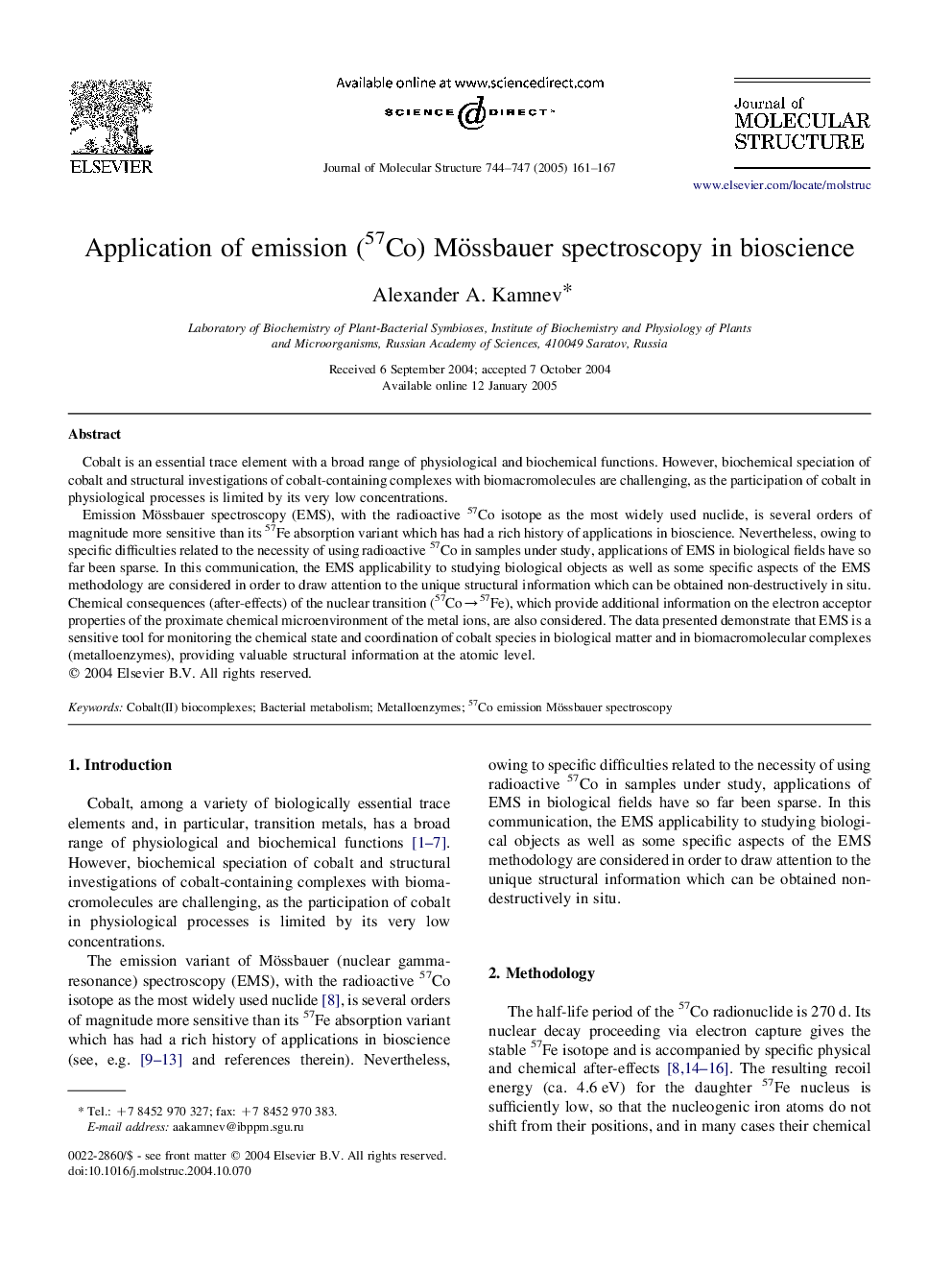| Article ID | Journal | Published Year | Pages | File Type |
|---|---|---|---|---|
| 9770053 | Journal of Molecular Structure | 2005 | 7 Pages |
Abstract
Emission Mössbauer spectroscopy (EMS), with the radioactive 57Co isotope as the most widely used nuclide, is several orders of magnitude more sensitive than its 57Fe absorption variant which has had a rich history of applications in bioscience. Nevertheless, owing to specific difficulties related to the necessity of using radioactive 57Co in samples under study, applications of EMS in biological fields have so far been sparse. In this communication, the EMS applicability to studying biological objects as well as some specific aspects of the EMS methodology are considered in order to draw attention to the unique structural information which can be obtained non-destructively in situ. Chemical consequences (after-effects) of the nuclear transition (57Coâ57Fe), which provide additional information on the electron acceptor properties of the proximate chemical microenvironment of the metal ions, are also considered. The data presented demonstrate that EMS is a sensitive tool for monitoring the chemical state and coordination of cobalt species in biological matter and in biomacromolecular complexes (metalloenzymes), providing valuable structural information at the atomic level.
Keywords
Related Topics
Physical Sciences and Engineering
Chemistry
Organic Chemistry
Authors
Alexander A. Kamnev,
